Can AI Really Restore Old Photos Better Than a Human Artist?
You’ve probably heard of the latest craze in the world of photo restoration – artificial intelligence (AI). But can a machine really replace a human artist when it comes to repairing and enhancing old photos?
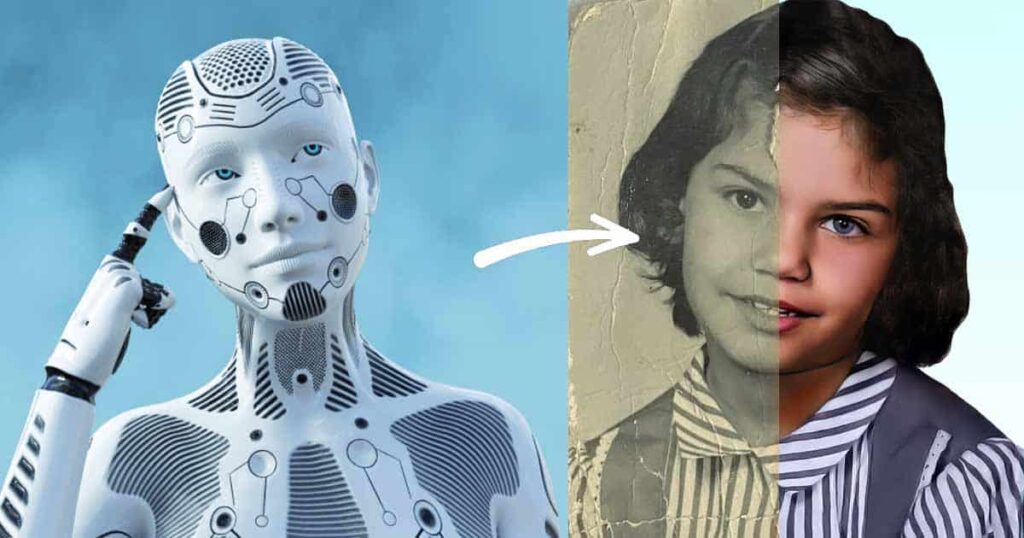
Let’s explore the capabilities (and limitations) of AI in the field of photo restoration.
The Rise of AI in Photo Restoration
Gone are the days of hiring a skilled artist to spend hours (and a small fortune) fixing scratches, cracks, and blemishes on your beloved photos. Now, all you have to do is upload your image to an AI-powered photo restoration tools, sit back, and let the machine do the work.
Well, thing is not that simple. Let’s learn why.
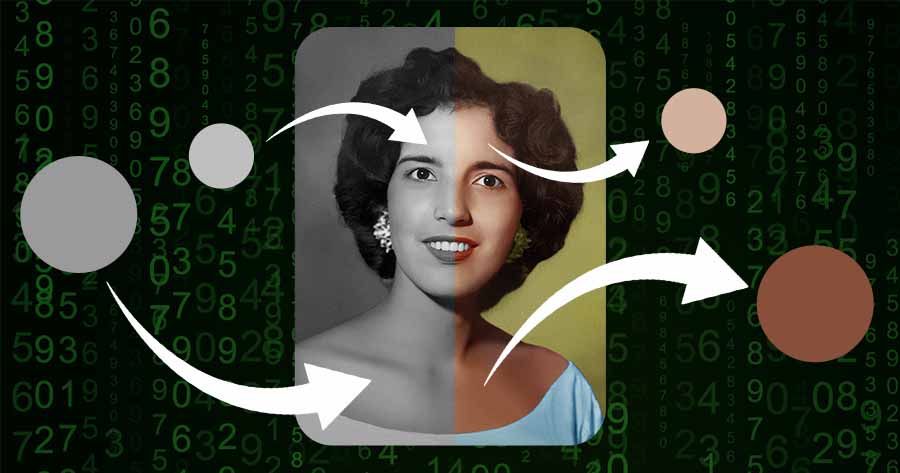
Before you get too excited and start uploading all of your faded family photos, it’s important to note that AI is not a complete replacement for human artists. It can’t quite match the creativity, accuracy and artistic skill of a real-life human artist. However, it is getting better and better at fixing basic issues, damage and adding some color to those old black and white pics.
The Potential Benefits of AI in Photo Restoration
Now, before you go bashing AI as a useless tool in the world of photo restoration, let’s talk about the potential benefits of using it.
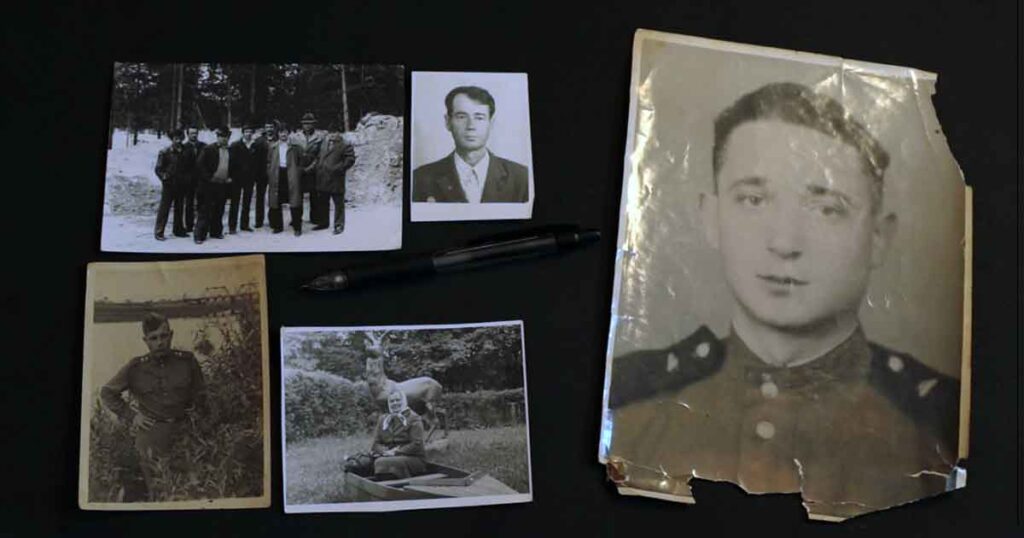
One potential benefit is that AI can make the process more accessible and affordable for a wider range of people. Currently, photo restoration can be a costly and time-consuming process, and not everyone has the resources to hire a skilled artist. With AI-powered tools, individuals and organizations with limited budgets may be able to restore and enhance their photos at a lower cost.
AI can also make the process more efficient, allowing human artists to focus on the more complex and creative aspects of photo restoration. Think of it as a helpful assistant, rather than a replacement.
AI vs. Human Artists in Photo Restoration
AI has the potential to revolutionize the field of photo restoration, but it is not capable of completely replacing human artists. While AI can certainly assist with certain tasks and make the process faster and more efficient, it is not yet able to match the skill and creativity of a human artist.
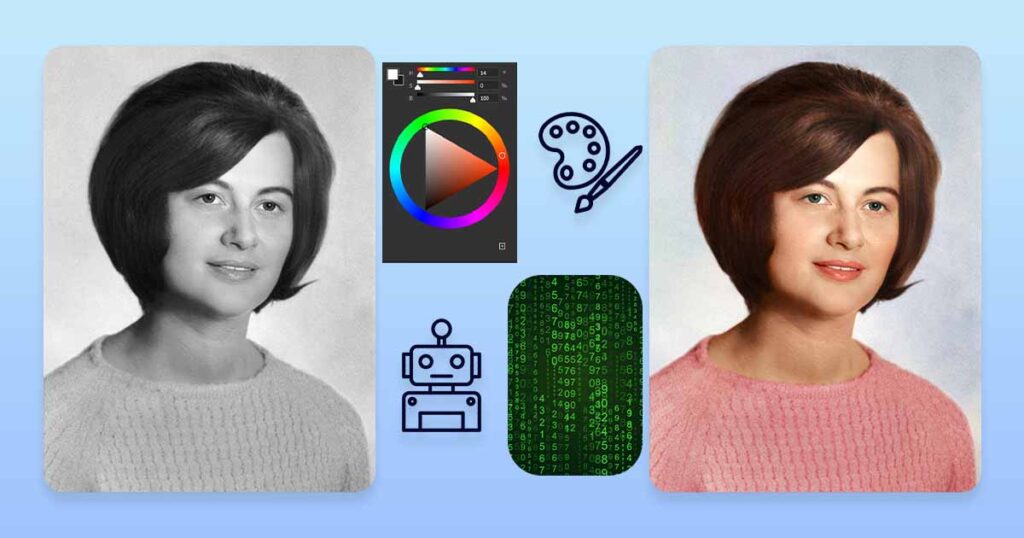
However, as AI technology continues to advance, it is likely that we will see even more impressive results from AI-powered photo restoration tools. It is possible that AI will eventually be able to handle more complex tasks and potentially even surpass the capabilities of human artists in certain areas of photo restoration, but not master the art as a whole.
Overall, AI is a valuable helping tool that has the potential to greatly assist with photo restoration, but it should be used in conjunction with the skills and creativity of human artists to produce the best possible results.
Can AI Fully Replace Restoration Artists?
The advent of AI photo restoration has sparked a debate regarding the role of restoration artists in the digital age. While AI technology has made significant strides in automatically enhancing and repairing old or damaged photographs, the question remains: can AI fully replace restoration artists?
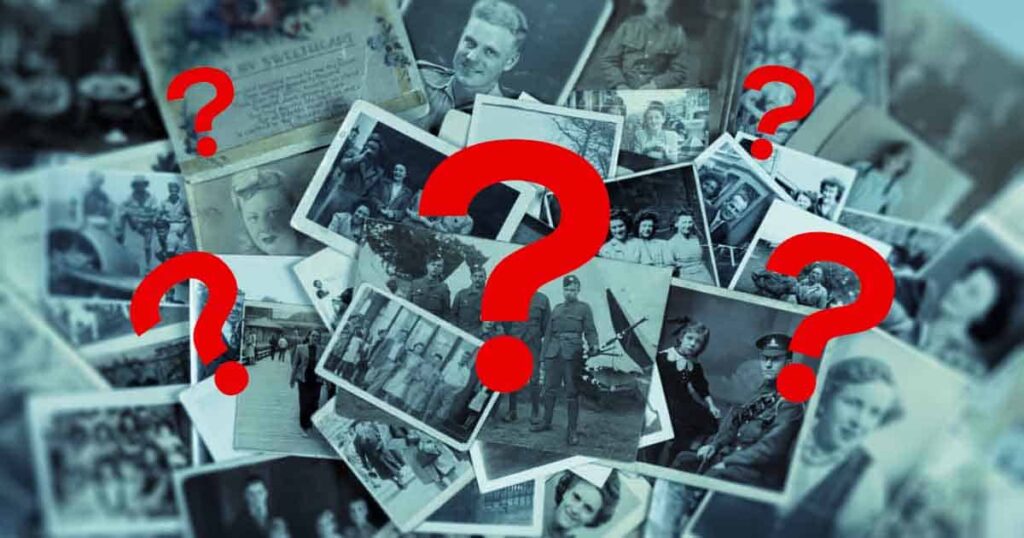
Furthermore, restoration artists often work closely with clients, engaging in a collaborative process to understand their specific goals and desires. They possess the ability to tailor their approach to suit individual preferences, ensuring a personalized and customized restoration experience.
The human touch provided by restoration artists establishes a connection and fosters trust between the artist and the client, which may not be replicable by AI technology alone.
The Limitations of AI in Photo Restoration
So, can AI completely replace human artists in the field of photo restoration? Not quite. While AI has the potential to greatly assist with the process and may even surpass human capabilities in certain areas in the future, it is still important to have human oversight and artistic skill in the mix.
AI algorithms often struggle with tasks that require a high degree of creativity or nuance, such as matching the style of a particular artist or creating a specific mood or atmosphere in a photo. These tasks require a level of artistic skill and judgment that is beyond the capabilities of current AI technology.
Additionally, AI algorithms are only as good as the data they are trained on. If the training data is of poor quality or does not represent a diverse range of styles and techniques, the results produced by the AI will likely be of poor quality as well. This is why human oversight and quality control is still necessary when using AI for photo restoration.
AI Can’t Replace Human Artist, But it Can Help
While AI photo restoration has revolutionized the field and offers numerous benefits, it is unlikely to completely replace restoration artists. The unique blend of artistic expertise, historical knowledge, and personalized touch that restoration artists bring to the table remains invaluable in preserving the integrity and authenticity of old photographs.
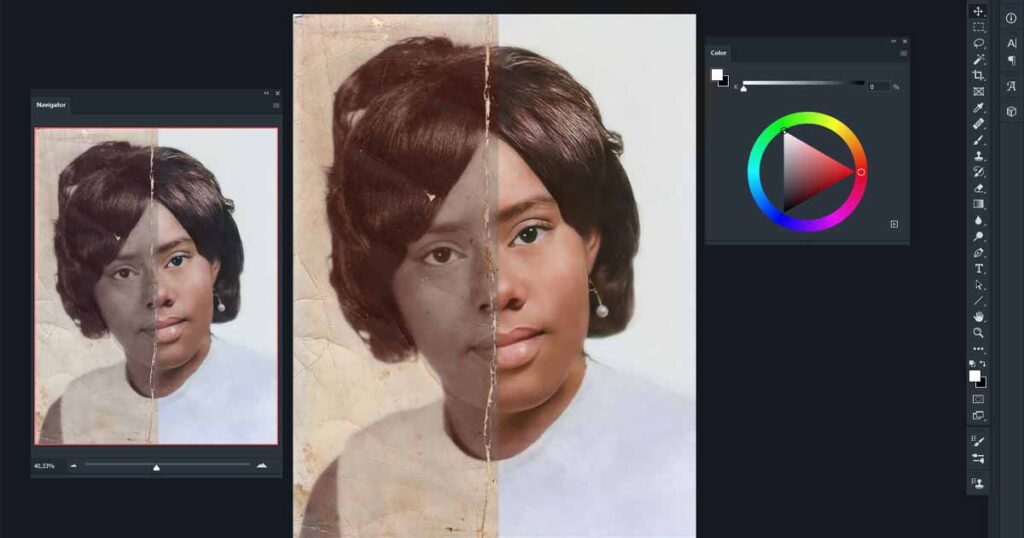
AI technology can undoubtedly serve as a powerful tool in assisting restoration artists, enabling them to work more efficiently and effectively. Ultimately, the synergy between AI and human creativity is likely to yield the most remarkable and authentic results in the field of photo restoration.
Manual and AI Photo Restoration
Now that we have a better understanding of what AI photo restoration is and that AI will never be able to replace human artists, let us compare these various approaches to photo restoration and find the best one.
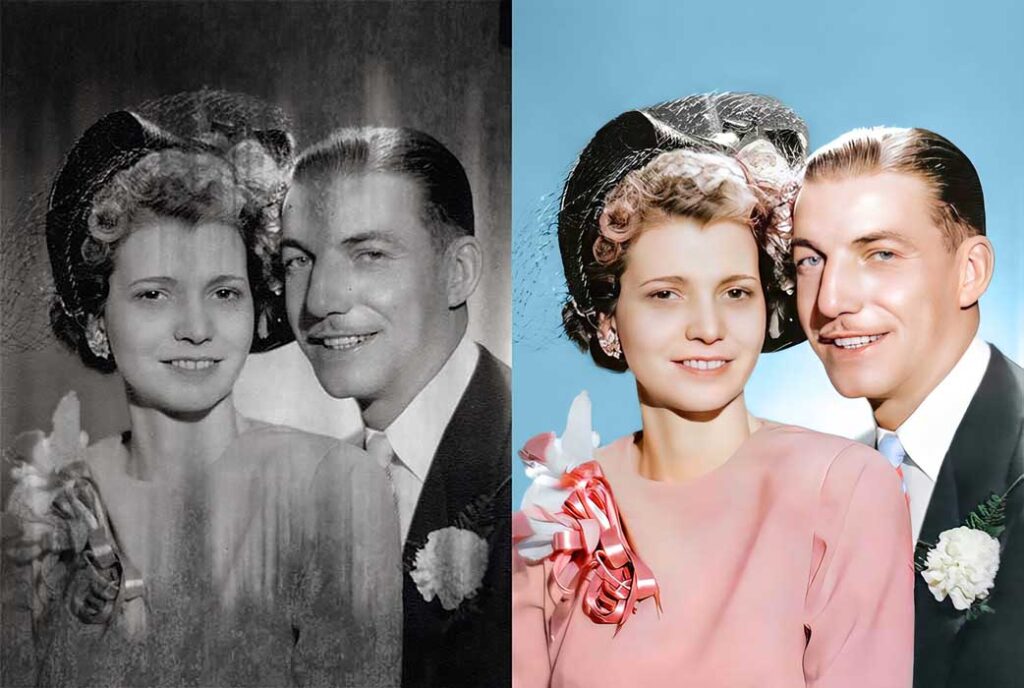
This image will be used to compare the differences between these. Given its quality and current state of damage, it can be classified as complex, so let’s see how different types of photo restoration will alter its appearance.
Manual Photo Restoration
Manual photo restoration refers to the process of repairing or enhancing a damaged or faded photograph using digital photo editing techniques such as painting, retouching, and airbrushing.
This is typically done by a skilled artist who has a strong eye for detail and the ability to match colors and tones to create a seamless and natural-looking result.
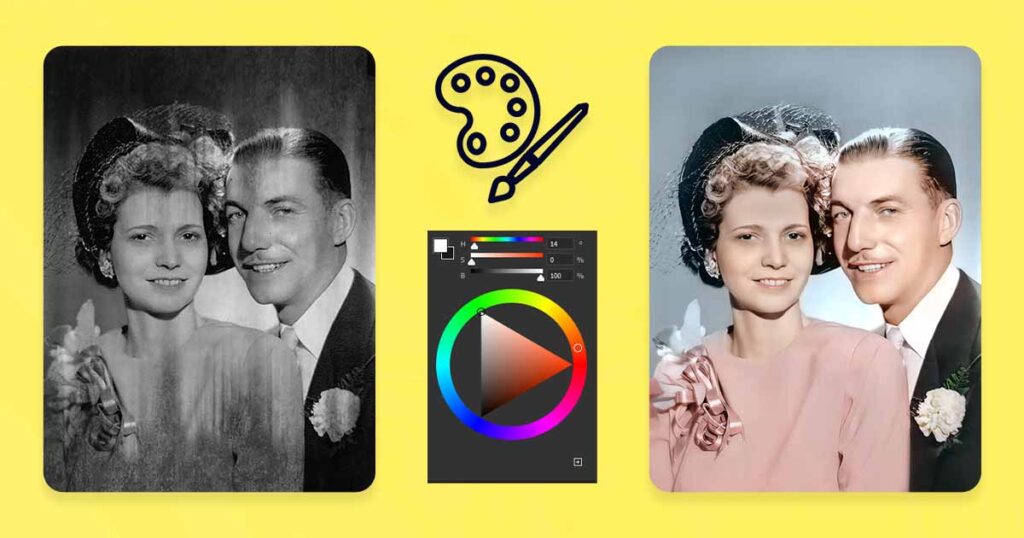
A fully manual photo restoration and colorization of a difficult photograph. This is a completely manual restoration, with no AI tools used within or outside of Photoshop.
Advantages of manual restoration
Manual photo restoration is the oldest style, thus it has the biggest number of experienced artist who have been working this way for years.
- Manual restoration relies on the skills and artistic expertise of restoration artists who have a deep understanding of various restoration techniques and historical contexts.
- Manual restoration artists can make informed decisions on color correction, composition, and the preservation of the original aesthetic, ensuring the authenticity of the restored photograph.
- Skilled manual restoration artists have a meticulous eye for detail, allowing them to carefully repair and enhance damaged or faded photographs with precision.
- Allows for a personalized approach tailored to the specific needs of each photograph, taking into account its unique characteristics and restoration requirements.
Manual restoration is particularly advantageous for complex cases that require a high level of expertise, as restoration artists can adapt their techniques and methods to address intricate restoration challenges effectively.
Disadvantages of manual restoration
Despite being the oldest approach to image repair, it still has, and will always have, these drawbacks:
- Manual photo restoration can be a time-consuming process, especially for extensive restoration projects or photographs with complex damage.
- Manual restoration often involves skilled artists who command higher rates for their expertise and time. The cost of manual restoration can be higher compared to AI restoration or other automated methods.
- Manual restoration relies on the subjective judgment and artistic interpretation of the restoration artist. Different artists may approach restoration differently, leading to variations in the final result.
- Manual restoration requires a high level of skill, expertise, and experience. Not all individuals have the necessary artistic abilities or knowledge of restoration techniques to effectively restore photographs manually.
Despite its advantages, manual restoration has its limitations and challenges, making it important to consider alternative approaches such as AI restoration or a mixed approach depending on the specific restoration needs and project requirements.
AI Photo Restoration
AI photo restoration, on the other hand, involves using machine learning algorithms to analyze a damaged photo and make predictions about how to repair it. These algorithms can be trained on a large dataset of restored photos to learn the patterns and techniques used by human artists.
AI photo restoration tools, allow users to upload a damaged or faded photo and automatically repair and enhance it using AI.
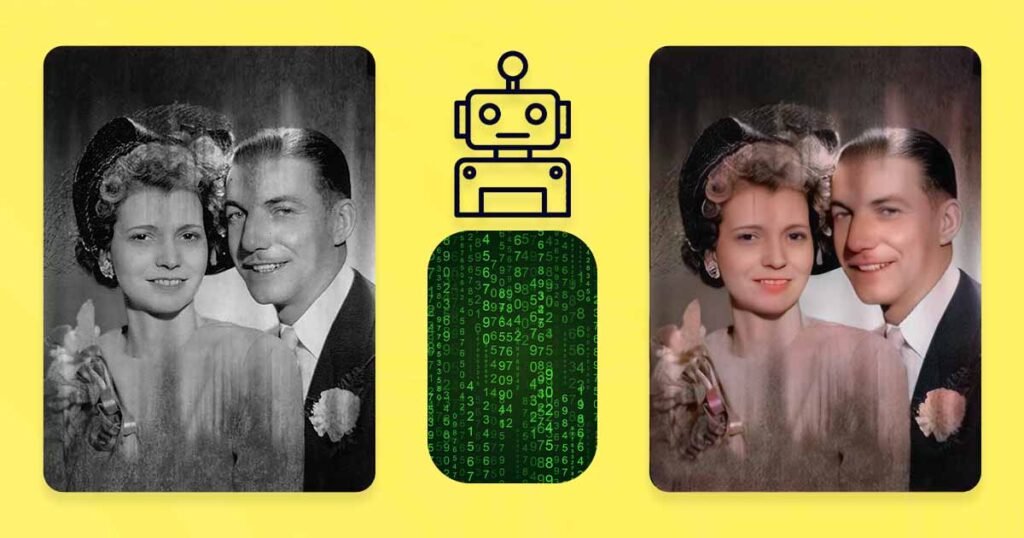
This is an example of an 100% AI-powered photo restoration and colorization of the same image. This is a completely automatic restoration, with no photo editing done in Photoshop. As you can see AI can’t handle difficult images, at all.
Advantages of AI restoration
At first glance, AI photo restoration appears to offer numerous advantages. It can:
- Process large volumes of images quickly, thus, handling extensive restoration projects with lots of images
- AI algorithms can analyze and understand patterns, colors, and textures, enabling them to automatically repair various types of damage, such as scratches, fading, and discoloration.
- Additionally, AI algorithms can learn from vast databases of restored images, continually improving their restoration capabilities.
However, there are several aspects where restoration artists still hold an edge over AI technology.
Disadvantages of AI restoration
Restoration artists have a deep understanding of artistic techniques, historical contexts, and cultural nuances that are critical in accurately restoring a photograph, which AI cannot understand or account for.
- AI lacks the expertise to make informed decisions on color correction, composition, and the preservation of the original aesthetic, and
- AI frequently uses basic algorithms to select detail that they believe is “right”, while actually distorting image and making it less accurate
- AI also lacks the ability to infuse emotion and subjective judgment into their work, capturing the essence and spirit of the original piece
- AI is program written by humans, not human itself, so it can’t think and make rational decisions approved by expertise, not basic sequence of actions
These and other AI-specific issues frequently result in a robotic and often unnatural final image.
Combined or Mixed Photo Restoration
A mix between manual and AI photo restoration involves using a combination of both approaches. In this case, a skilled artist may use AI tools to assist with certain tasks, such as colorization or removing blemishes, and then use their own artistic skill and judgment to further refine and enhance the result.
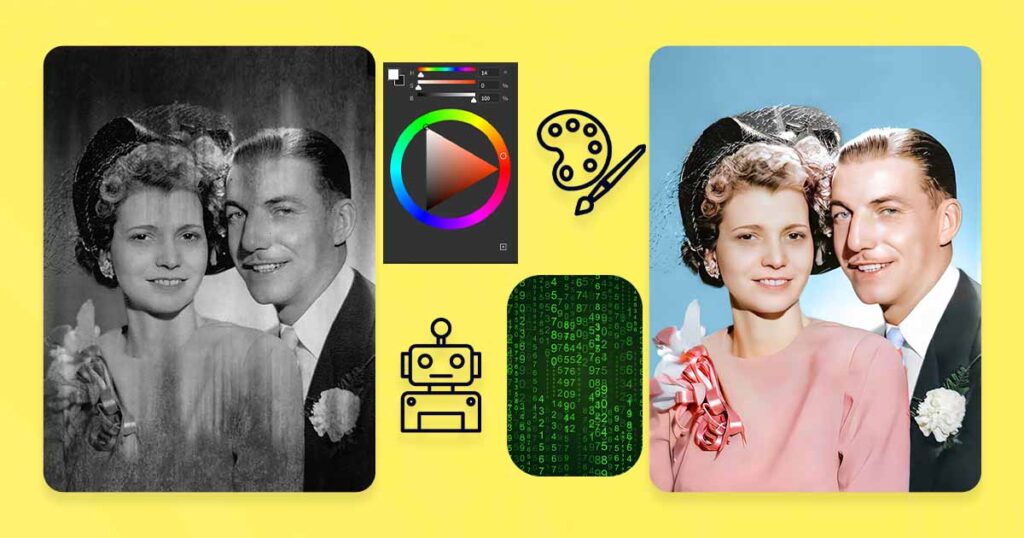
And this is the result if an artist can work manually with high precision and then use AI to sharpen, restore, and colorize some details while the artist maintains quality control over both the AI and manual input.
Advantages of mixed restoration
This approach can be more time-consuming than using AI alone, but it will produce better results, particularly for more complex or sentimental projects.
- It has all of the benefits of both manual and AI photo restoration without the drawbacks
- Allows for a more thorough restoration by combining manual techniques to define and AI tools to refine details with unprecedent accuracy.
- Reduces overall restoration time by automating repetitive tasks with AI algorithms.
- AI tools recognize patterns and automatically repair common damage, providing a more accurate foundation.
- Ensures a cohesive look and feel throughout multiple images or restoration projects.
- Combining manual and AI techniques offers artistic judgment and personalized enhancements.
- Handles complex challenges with AI assistance and expertise in artistic techniques.
Disadvantages of mixed restoration
While being the best of all available approaches to photo restoration it still has few disadvantages.
- Artists must be skilled and experienced in both manual editing and working with industry-leading AI tools, making this the most difficult approach of all.
- The use of AI in conjunction with manual labor may be slower and more expensive than other methods.
As you can see, these drawbacks are related to the complexity of the work rather than the quality of the restored image. As previously stated, neither AI nor manual work are good methods for restoring photos in 2025, so combining these two methods yields the best, most accurate, and beautiful results!
The Verdict: AI vs. Human Artists in Photo Restoration
So, can AI completely replace human artists in photo restoration? The short answer is no.
While AI can certainly assist with certain tasks and make the process faster and more efficient, it is not yet capable of replacing the skill and creativity of a human artist.
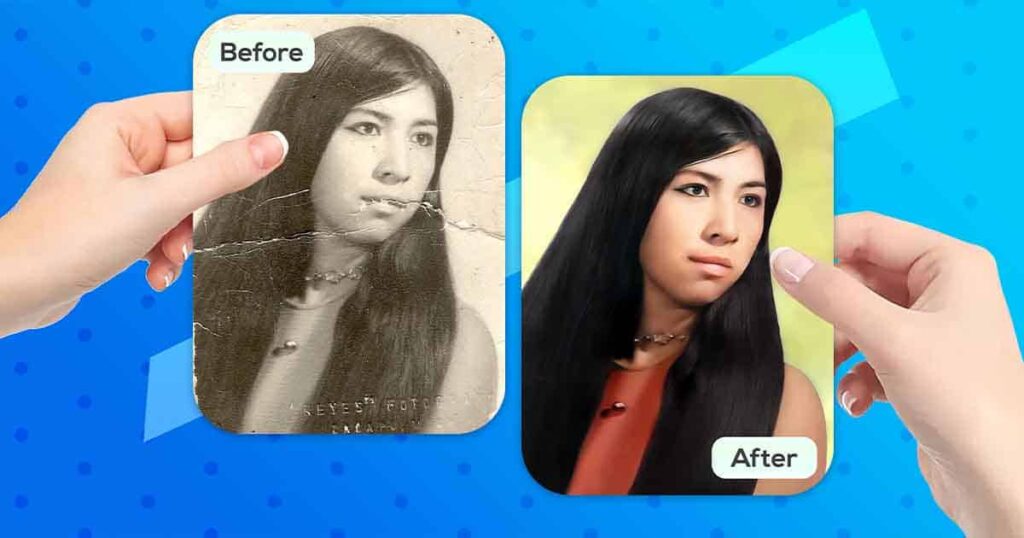
However, as AI technology continues to advance, it is likely that we will see even more impressive results from AI-powered photo restoration tools. It is possible that AI will eventually be able to handle more complex tasks and potentially even surpass the capabilities of human artists in certain areas, but not now in 2025.
In conclusion, AI has the potential to revolutionize the field of photo restoration, but it is not yet capable of completely replacing human artists. It is a valuable tool that can assist with restoration.
Get Your Photos Restored by Real Experts
As previously stated, AI technologies cannot do what real artists can do, but they can be a huge help!
We, as a team of photo restoration aces with years of experience, artistic skills, and moderate use of new technologies, can ensure that your photos are restored quickly, with the best quality results, most accurate and beautiful details, colors, and image quality!
Click here to learn more about Photo Restoration Service or buy it right now!
Get a Free Quote
✔ Professional Photo Restoration
✔ Fast Delivery (1-4 Business days)
✔ Low Price Without Taxes or Fees
✔ Unlimited Free Revisions
✔ Satisfaction Guarantee
LEARN MORESubscribe to Newsletter



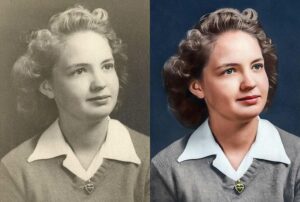

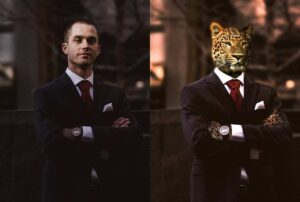


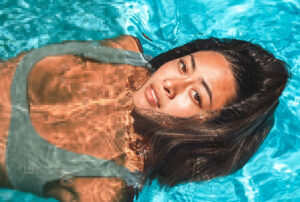




AI vs. Photo Restoration Services Compared: Which is Best for My Old Photos?
Compare photo restoration AI and professional services side-by-side. Uncover the [...]
Jun
5 Benefits of Old Photo Restoration: Protect Your History
Do you want to explore the history of your family? [...]
Jan
How To Store Old Printed Photos and Avoid Damage
Do you have some precious printed photos? Let us explain [...]
Jan
Old Photo Restoration Tutorial 2025 – Easy Photoshop Guide
Did you find some old and damaged photos at home? [...]
Dec
The History of Photo Restoration 2025
Discover the rich history of photo restoration, a practice dating [...]
Dec
How to Protect Your Old Photos From Damage
Do you have some old printed photos that are dear [...]
Jan
What is Photo Resolution Enlargement and How Does it Work
Learn everything you need to know about photo resolution enlargement. [...]
Jan
What is Photo Restoration and How Does it Work? 2025
Want to know what photo restoration is and how does [...]
Dec
How Much Does Photo Restoration Cost? Factors That Affect Pricing
Wondering how much photo restoration costs? Prices can range from [...]
Aug
How to Colorize Black and White Photos Using AI for Free – 2025
Want to learn how to colorize your black and white [...]
Jun
Top 10 Best Online Photo Printing Services in 2025 for US
Discover the top 10 online photo printing services in 2023! [...]
Apr
Cracks in Old Photos: How to Save Your Precious Pictures?
Discover expert tips and solutions to restore old photos damaged [...]
Jul